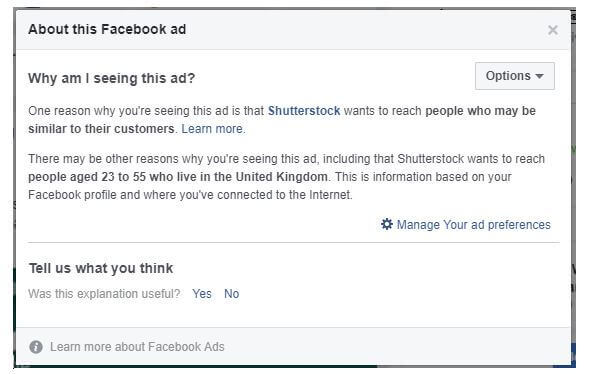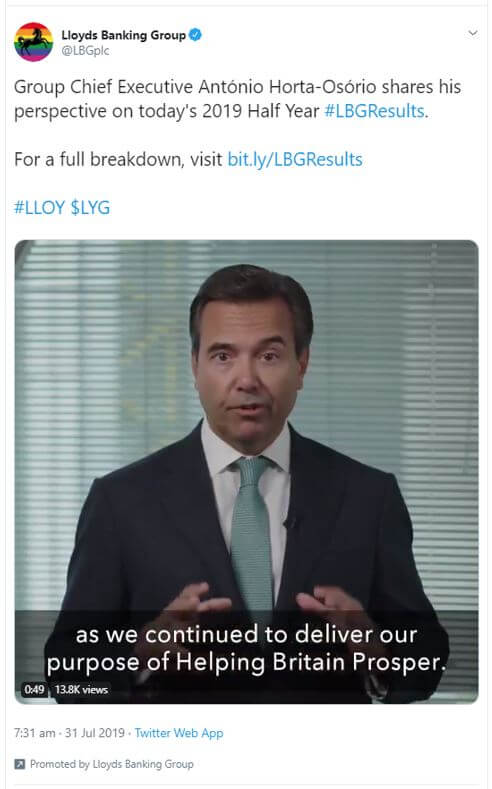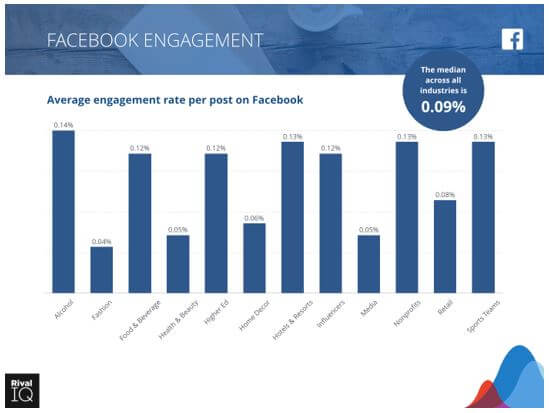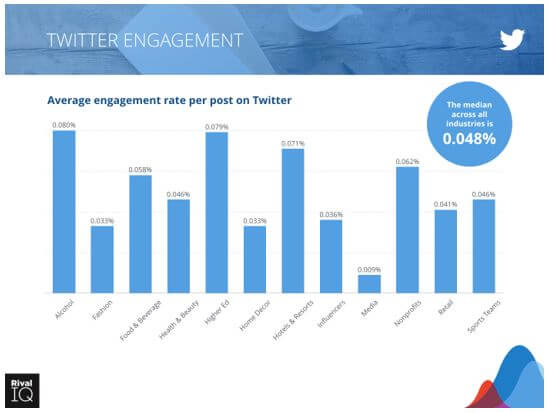The global pandemic has caused all of us to move online in our private lives, whether keeping in touch with relatives, shopping or working from home, but it is our purchasing habits that have had to perhaps change most. Where once we liked to go to the shops and browse before purchasing that special gift or outfit, we now opt to browse and purchase online via the ecommerce store on a company’s website.
In fact, 2020 saw a 31% increase in online retail with just under £100 billion in sales. Ensuring your business can be found and has a share of that ever-increasing online market is going to be vital in 2021 and using social media advertising is just one way to do this.
Increasing Competition Online
Within the UK alone social ad spend is projected to reach £5,240 million in 2021 and increase to £6,503m by 2025. It’s clear that more and more businesses are seeing the benefits of advertising on platforms such as Facebook, LinkedIn, Snapchat and Twitter.
So with such prolific growth, should your business consider social media advertising? Here are 5 benefits to take into consideration when allocating some of your marketing budget to social ads and to help understand why it’s become so popular with businesses of all sizes across the UK.
1. Your Target Audience Spend Time There
Contrary to popular belief, social media ads stretch far beyond Facebook. In fact, almost every major social media platform has some form of advertising platform that can be utilised.
For businesses, this is good news as it gives you the opportunity to put ads in front of your target audience regardless of which platform they use on a regular basis.
If you’re unsure about what platform your target audience are likely to be on, the following statistics should provide some insight:
- Facebook – The largest demographic on Facebook is men aged 25 and 34 years old, making up 19% of users.
- Youtube – 45% of users are female and 45% are male and 70% of users watch on their mobile.
- Twitter – 29% of Twitter users are between 25 and 34 years old.
- Linked In – Used primarily by professionals, 61% of LinkedIn’s users are between 25 and 34 years old.
- Instagram – Users are almost evenly split on Instagram with 50.9% women and 49.1% men and 35% of users aged between 25 and 34 years old.
- Snapchat – 82% of users are 34 or younger and 61% of users are women.
- Pinterest – 72% of users are women and 41% of users are aged between 25 and 34 years.
2. You Can Easily Target Very Specific Audiences
A person’s social media account tells you a lot about them, and social media advertising platforms allow you to utilise this data to put your ads in front of the right people.
Take a look at some of the demographics, behaviours and interests that can be targeted across various social media platforms:
- Location – Where the user lives, or where they have recently been.
- Company – What industry they work in, what size the company they work for is and even those who work for specific companies.
- Demographics – Enables targeting on things like age, gender, household income and parental status.
- Education – Allows targeting on aspects of a user’s education such as are they college educated, did they finish uni, study in a particular field or even go to a specific school or college.
- Interests – Primarily based on the user’s behaviour, you can target people with an interest in all manner of things, from sports and activities to food and music.
- Life Events – Upcoming marriage, just moved to a new house, upcoming birthday and just had a child are all things that can be targeted.
- Online Activity – Tracking codes such as the Facebook Pixel available through social media platforms allow you to target users based on their previous browsing history, i.e. – target users that visited your website in the past.
Additionally, when setting up a new campaign almost all social media advertising platforms will ask you for an objective; be it video views, website clicks, post engagements or sales.
Once this has been defined, the platform will use previous user behaviour data to put your ads in front of the people that are most likely to perform your desired action.
Top Tip – If you’re ever shown an ad on Facebook and aren’t sure why, simply click ‘why am I seeing this ad’ for an explanation:


3. There are Numerous Advertising Formats
In addition to a range of different platforms and targeting options, there are also a range of advertising formats that you can choose from – allowing you to convey your advertising message in different ways such as video, text, image, carousel and more.
Some of the available advertising formats across the main social media channels include:
- Facebook – Photo, video, stories, messenger, carousel, slideshow, collection and playables. Below is an example of a Facebook video ad from SEMrush.


- Twitter – Promoted tweets, promoted accounts, promoted trends, image ads, video ads and app ads. Below is an example of a promoted ad.


- LinkedIn – Sponsored content, sponsored InMail, text ads, video ads, carousel ads, follower ads, spotlights ads and job ads. Below is an example of a LinkedIn text ad in the banner space.


- Snapchat – Snap Ads, collection ads, story ads, AR lenses, filters and commercials. Below is an example of a Snapchat story ad.


4. Your Competitors Are Using It
If your competitors have prominence on a platform used by your target audience and you don’t, your business is at a disadvantage.
Be sure to check out your competitor social media activity to get an idea of what types of content they are posting and more importantly, which types of content is getting engagement from their followers.
Top Tip – You can now view the ads that any Facebook business page is running through the new ‘info and ads’ tab. Find out more about this here.
5. Organic Reach and Engagement Has Been Suppressed
Finally, the organic reach and engagement rates on social posts has seen a notable downfall in recent years. Below you can see the engagement rate on organic posts from businesses across the 3 most popular social media platforms:


Facebooks engagement rate sits at just 0.09% across all industries. When compared with the engagement rates of email marketing, 1,000 likes on a Facebook page could be considered as valuable as 1 email subscriber!


Twitter fares even worse, at just 0.048%.


So.. Why Is Engagement so Low?
As well as becoming more saturated with content from businesses, platforms like Facebook are beginning to prioritise posts from family and friends over marketing content making it harder for business posts to get much visibility without allocating budget to them.
There is also the consideration that previous studies have indicated that users don’t pay attention to brands they like on Facebook, so advertising is really the only way to reach these users.
Frequently Asked Questions
How Do I Get Started with Social Media Advertising?
If you want to start running social media ads inhouse, you should start by exploring the relevant advertising platforms for each social media channel:
How Much Does Social Media Advertising Cost?
The cost of social media advertising varies from platform to platform and industry to industry.
Here a few things to bear in mind with regards to social media advertising costs:
- All native advertising platforms for the popular social media platforms allow you to implement a campaign budget.
- Generally speaking, the broader your advertising metrics are the lower your cost per click will be, however, that also means your ads are likely to be less relevant to the user.
- LinkedIn is generally the most expensive, with a minimum daily budget £8 and a higher cost per click.
- Campaigns designed to generate impressions and video views will generally cost less than those set up to get website clicks and conversions.
- The relevance and quality of your ad will have an impact on cost.
Is Boosting Posts on Facebook Worth It?
Many businesses end up boosting posts on Facebook as prompted by the platform. Boosting is an easy and cost effective to get more exposure of your post and can be very successful for competitions, photos, blog posts and other posts that aren’t sales orientated.
However, when boosting, note that you are only able to use basic targeting functionalities and Facebook will target users more likely to engage (likes, comments, shares) rather than link clicks by default. Therefore, if you are running a campaign that’s designed to generate conversions, consider exploring the Facebook ads manager platform instead.
Should I Ditch Google Ads for Social Media Advertising?
We generally recommend keeping a mix of both based on what works best for your business.
Google Ads and similar platforms present results to users based on the keywords they search meaning you can assume that the user is interested or looking to find out more about that particular product or service.
With social media advertising, there is less intent, you are simply targeting someone because they meet the profile of your target audience, they may have no interest in actually using your services or buying your product. The exception to this is when you use the Facebook pixel as when retargeting previous visitors of your website, you can assume higher intent.
Another consideration is that some businesses will just naturally struggle to make an impact on social media, whether it’s because their target audience doesn’t use it – or if it’s a business that just doesn’t appeal to people on social media, an example of this could be an accountancy practice.
Utilising both platforms gives you maximum coverage and ensures that you are there at every touch point on a user’s journey to converting.
Which Social Media Platform Is Most Effective?
The effectiveness of a social media platform will depend largely on your target audience, product or service and budget. However, Facebook could be considered to have the most advanced advertising features of all social media platforms and also has the largest user base.
Win at Social Media with All Things Web®
We’ve only scratched the surface with the effectiveness of social media advertising within this post, there’s a whole range of other handy features designed to help you reach your target audience through social media.
Want to know more? We offer a range of social media services including fully managed services and bespoke social media training. Give us a call on 01285 50 55 50 or fill out a contact form for more information.

